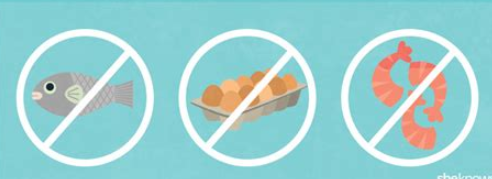TravelBestForyYou.com
Picture this: You’re finally embarking on that dream vacation you’ve been planning for months. The excitement is building, your bags are packed, but there’s that nagging worry in the back of your mind – how will you navigate your food allergies in an unfamiliar place? Trust me, I’ve been there, and it’s like trying to solve a puzzle while blindfolded. According to the World Allergy Organization, approximately 240-550 million people worldwide suffer from food allergies, making this concern far more common than you might think.
As someone who’s traveled extensively while managing severe nut and shellfish allergies, I can tell you that having food allergies doesn’t mean you have to miss out on the incredible experiences that travel offers.
In fact, a recent study by the International Journal of Travel Medicine found that 82% of people with food allergies successfully manage their conditions while traveling through proper preparation and awareness.
The landscape of traveling with food allergies has transformed dramatically over the past decade. Airlines now offer allergen-free meals, hotels are becoming more accommodating, and restaurants worldwide are increasingly aware of cross-contamination risks.
Yet, according to the Food Allergy Research & Education (FARE), 32% of people with food allergies still report having at least one allergic reaction while traveling. This statistic isn’t meant to scare you – it’s a reminder of why proper preparation is crucial.
Pre-Trip Planning: Your Foundation for Safe Travel
1. Medical Documentation and Supplies
- ✓ Written emergency action plan
- ✓ Doctor’s note (translated if traveling internationally)
- ✓ Multiple epinephrine auto-injectors
- ✓ Antihistamines and other prescribed medications
2. Research Your Destination
- ✓ Local emergency numbers
- ✓ Nearby hospitals and clinics
- ✓ Common ingredients in local cuisine
- ✓ Allergy-friendly restaurants
Communication Strategies That Could Save Your Life
Pro tip: Did you know that 68% of allergic reactions while traveling occur due to language barriers? Here’s how to break through:
- Translation Cards: Create detailed cards explaining your allergies in the local language
- Mobile Apps: Download translation apps specifically designed for food allergies
- Key Phrases: Learn to communicate your allergies in the local language
Smart Accommodation Choices
Choosing the right accommodation can make or break your trip. Consider these options:
| Accommodation Type | Benefits | Considerations |
|---|---|---|
| Apartment/Villa | Full kitchen, complete control over food preparation | Higher cost, may be less central |
| Hotels with Kitchenette | Balance of convenience and control | Limited cooking facilities |
| Allergy-Aware Hotels | Staff trained in allergy management | May be harder to find |
Dining Out Safely: A Strategic Approach
Remember: 92% of severe allergic reactions occur when eating outside the home. Here’s your survival toolkit:
- Research restaurants beforehand using allergy-friendly apps and websites
- Call ahead during off-peak hours to discuss your allergies
- Carry chef cards in the local language
- Choose off-peak dining times when staff can give you more attention
Emergency Preparedness: Your Safety Net
Create an emergency action plan that includes:
- Local emergency numbers
- Nearest hospital locations
- Embassy contact information
- Insurance details
- Emergency contacts
Conclusion
Living with food allergies doesn’t mean you have to live in fear or miss out on amazing travel experiences. With proper planning, clear communication, and the right precautions, you can explore the world safely and confidently. Remember, each successful trip builds your confidence and expertise in managing your allergies abroad.
Have you traveled with food allergies? Share your experiences and tips in the comments below!





